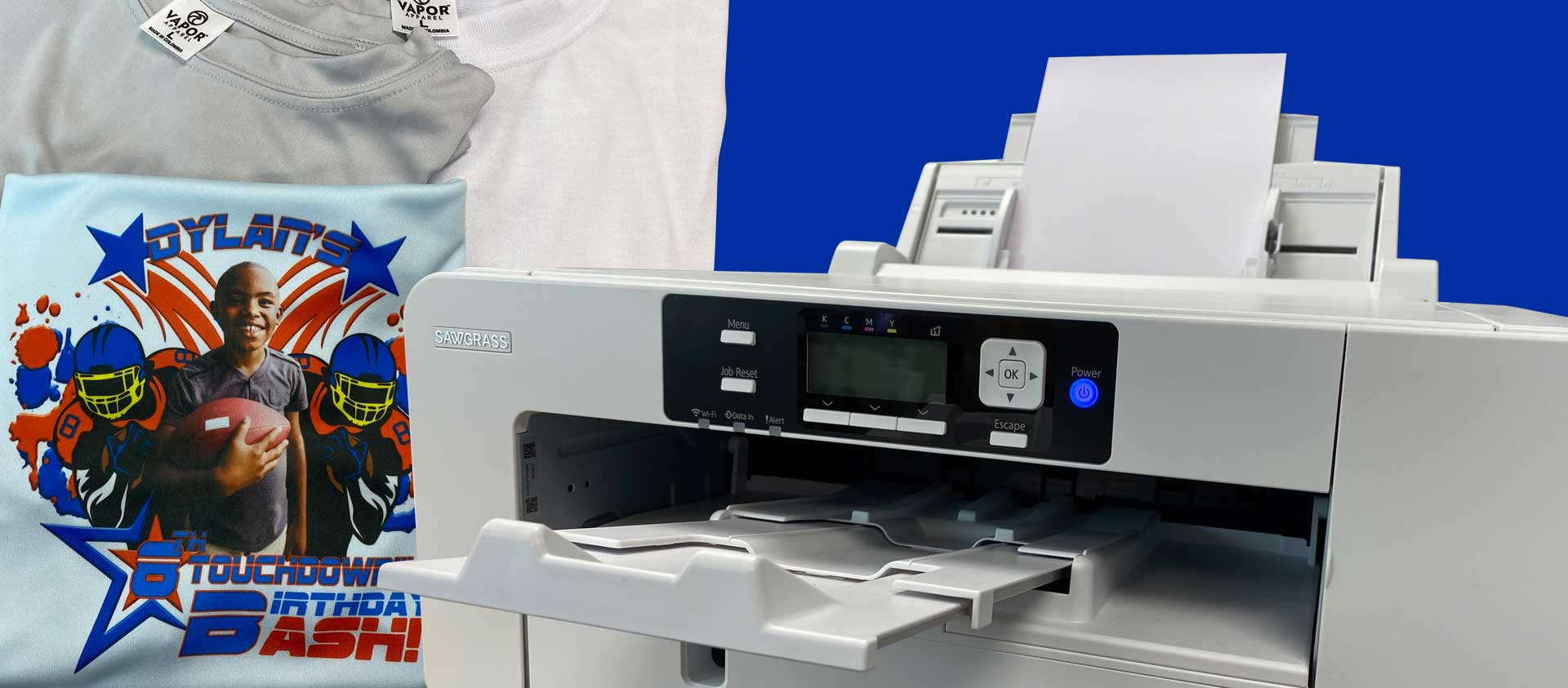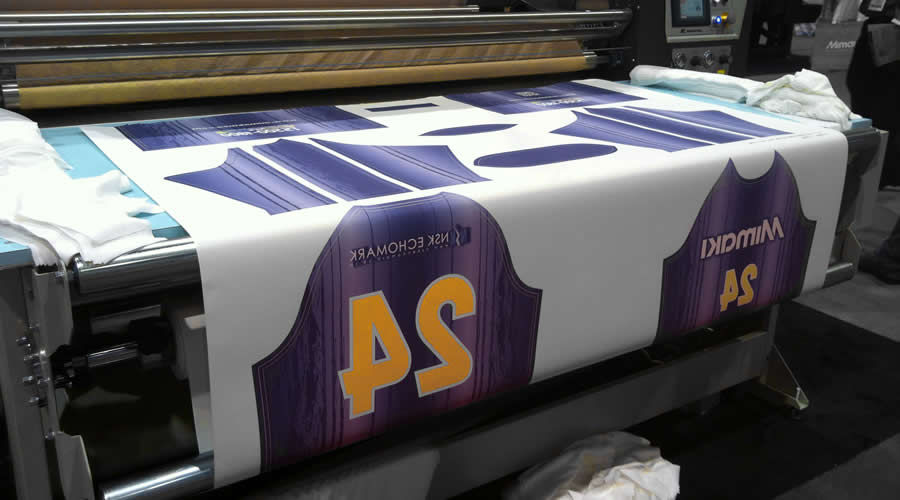Checking out the Benefits of Sublimation Printing for High-Quality Fabrics
Checking out the Benefits of Sublimation Printing for High-Quality Fabrics
Blog Article
A Comprehensive Overview to the Different Kinds Of Fabric Printing Methods
Starting an expedition of cloth printing strategies discloses an interesting junction of custom and advancement. Each approach, from the thorough craftsmanship of block printing to the fast effectiveness of display printing, serves one-of-a-kind functions and offers unique advantages. Digital printing's flexibility and ecological awareness stand in plain comparison to the quick personalization of warm transfer printing. Color sublimation printing captivates with its capability to create dynamic, enduring layouts on artificial materials. To absolutely grasp the nuances and potential applications of these diverse strategies, a deeper investigation is essential.
Block Printing
Block Printing, one of the earliest methods of fabric design, has a rich history that dates back to old worlds. The process involves sculpting complex layouts into wooden blocks, which are then dipped in dye and pressed onto fabric to develop patterns.
The accuracy and workmanship included in block printing make it a labor-intensive process, but it additionally permits for a high level of personalization. Craftsmens can develop special patterns by integrating different blocks or differing the application of dye. This flexibility has actually added to the enduring popularity of block printing in both modern and conventional fabric design.
Block printing is specifically valued for its aesthetic top qualities, including the slight variations in pattern and color that result from the hand-printing process. These flaws provide a special character to each item, identifying it from mass-produced fabrics. Regardless of developments in modern-day printing modern technologies, block printing remains a treasured strategy, commemorated for its historical value and imaginative worth.
Display Printing
Screen printing, an additional popular textile decor strategy, has actually changed the market with its performance and adaptability. This approach involves creating a pattern, called a screen, and utilizing it to use layers of ink on the printing surface. Each shade in the design requires a separate screen, which permits detailed and dynamic multi-colored prints.

Among the essential benefits of display printing is its flexibility to various sorts of fabrics, including cotton, polyester, and blends. This strategy is especially suitable for large-volume orders because of its cost-effectiveness and rate. The toughness of the prints is one more significant benefit, as the ink bonds well with the fabric, making certain lasting styles that endure multiple cleans.
The procedure starts with preparing the screens by coating them with a light-sensitive emulsion. As soon as dried, the style is moved onto the emulsion-coated screen utilizing a UV light resource. The revealed locations harden while the unexposed components are gotten rid of, developing a stencil. Ink is after that pressed via the stencil onto the fabric making use of a squeegee.
Display printing is extensively utilized in the garment industry, promotional items, and custom-made garments. Its capability for top quality, in-depth prints safeguards its status as a cornerstone technique in fabric printing.
Digital Printing
Digital printing has actually quickly become a cutting-edge method in the fabric market, leveraging innovative technology to create high-resolution designs directly onto material. Unlike typical techniques, electronic printing utilizes inkjet printers to down payment pigment or dye-based inks onto fabrics, enabling intricate and dynamic patterns with an impressive degree of detail and shade accuracy.
One of the key benefits of digital printing is its versatility. This technique permits for on-demand printing, which considerably reduces waste and decreases stock prices.
Furthermore, digital printing is eco-friendly. screen printing. It uses Source water-based inks and needs much less water and energy contrasted to traditional strategies, lining up with lasting practices. The precision of electronic printing likewise allows using a wider array of fabrics, consisting of cotton, silk, polyester, and blends, making sure versatility throughout various applications
Warmth Transfer Printing
Just how does warmth transfer printing change material design? Warmth transfer printing entails making use of heat and stress to transfer a design from a specially developed paper onto material.
Among the main advantages of warmth transfer printing is its capability to produce premium, detailed images quickly and successfully. It is particularly appropriate for little production runs and customized orders, making it a popular selection for personalized clothing and promotional products. Furthermore, this technique is functional, fitting different kinds of fabrics including cotton, polyester, and blends.
Additionally, warmth transfer printing is reasonably affordable compared to various other approaches, as it calls for very little setup and reduced preliminary financial investment - screen printing. This affordability, coupled with its ability for creating lively, durable prints, emphasizes its essential function in contemporary textile style

Dye Sublimation Printing
Dye sublimation printing, an innovative textile printing method, uses unrivaled vibrancy and long life for additional hints styles on different synthetic fabrics. The published transfer paper is then positioned on the material, and both are subjected to high heat and stress using a warm press.
One of the vital benefits of color sublimation printing is its capability to produce continuous-tone prints with dynamic colors and intricate details. Unlike other printing techniques, the color ends up being part of the textile rather than resting on top of it, resulting in a soft and breathable finish.
Verdict
Block printing is admired for its artisanal top quality, while screen printing is beneficial for high-volume manufacturing. Digital printing supplies flexibility and environmental benefits, whereas warmth transfer printing is optimal for quick personalization.
Each technique, from the thorough craftsmanship of block printing to the quick effectiveness of display printing, offers unique purposes and uses distinctive benefits. Digital printing's versatility and environmental awareness stand in raw contrast to the quick modification of warmth transfer printing. In spite of breakthroughs in modern-day printing technologies, obstruct printing continues to be a Web Site cherished strategy, commemorated for its historic value and artistic worth.
Dye sublimation printing, an innovative material printing technique, uses unmatched vibrancy and durability for layouts on different artificial textiles. Digital printing gives convenience and environmental benefits, whereas warmth transfer printing is excellent for quick modification.
Report this page